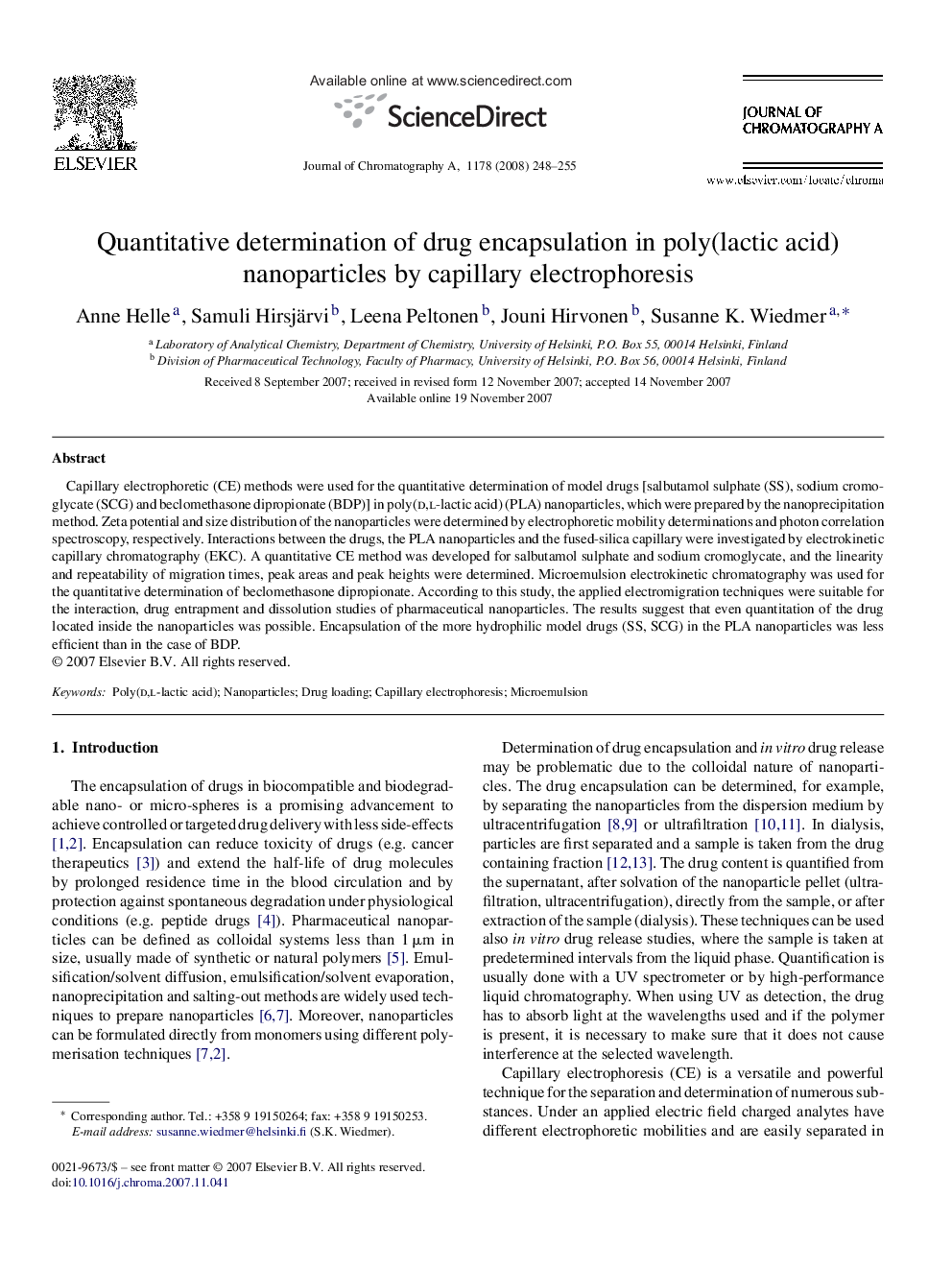| Article ID | Journal | Published Year | Pages | File Type |
|---|---|---|---|---|
| 1208449 | Journal of Chromatography A | 2008 | 8 Pages |
Capillary electrophoretic (CE) methods were used for the quantitative determination of model drugs [salbutamol sulphate (SS), sodium cromoglycate (SCG) and beclomethasone dipropionate (BDP)] in poly(d,l-lactic acid) (PLA) nanoparticles, which were prepared by the nanoprecipitation method. Zeta potential and size distribution of the nanoparticles were determined by electrophoretic mobility determinations and photon correlation spectroscopy, respectively. Interactions between the drugs, the PLA nanoparticles and the fused-silica capillary were investigated by electrokinetic capillary chromatography (EKC). A quantitative CE method was developed for salbutamol sulphate and sodium cromoglycate, and the linearity and repeatability of migration times, peak areas and peak heights were determined. Microemulsion electrokinetic chromatography was used for the quantitative determination of beclomethasone dipropionate. According to this study, the applied electromigration techniques were suitable for the interaction, drug entrapment and dissolution studies of pharmaceutical nanoparticles. The results suggest that even quantitation of the drug located inside the nanoparticles was possible. Encapsulation of the more hydrophilic model drugs (SS, SCG) in the PLA nanoparticles was less efficient than in the case of BDP.
